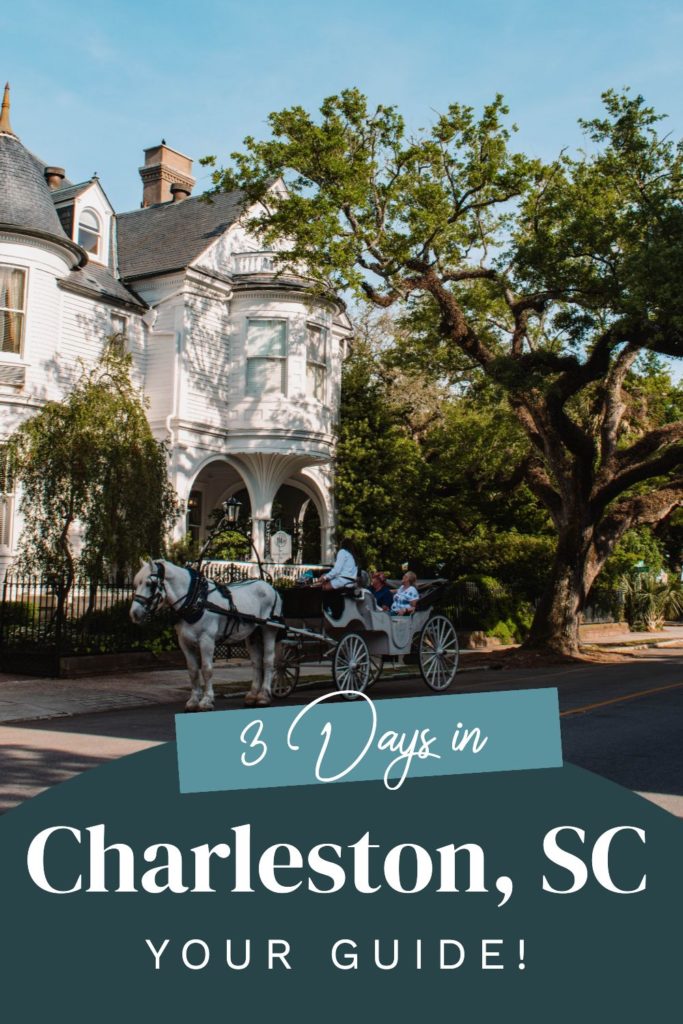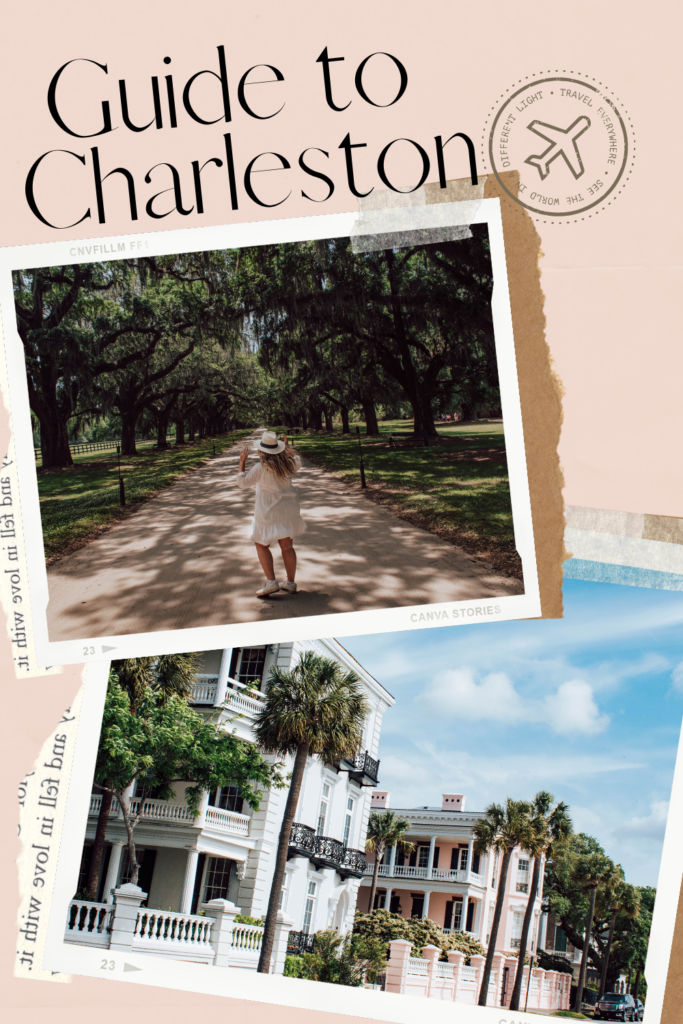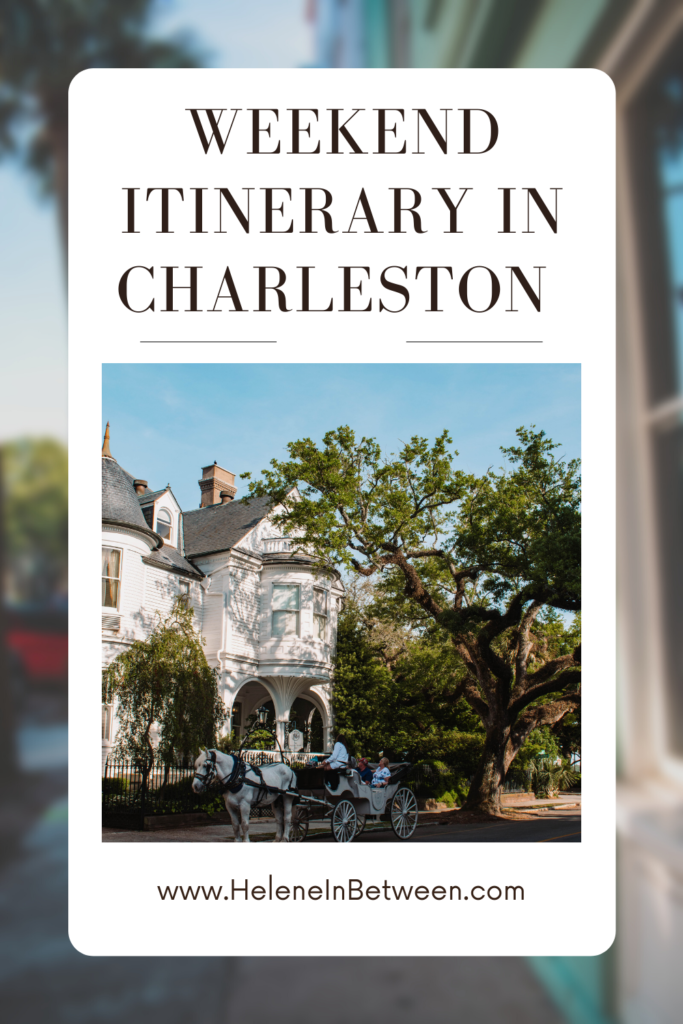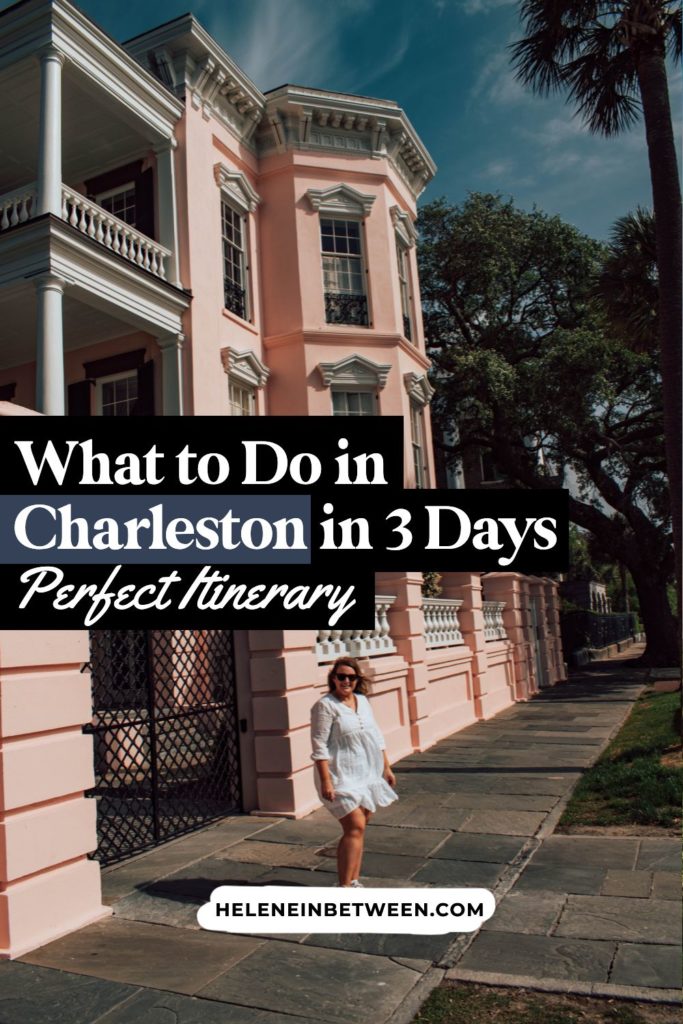Charleston, South Carolina is a city steeped in history, culture, and charm. With its cobblestone streets, colorful row houses, and historic landmarks, Charleston offers visitors a glimpse into the rich history of the American South. If you’re planning a trip to Charleston, here is the perfect 3-day itinerary to help you make the most of your visit.
Charleston feels like stepping back in an old, yet somehow familiar, past. Shielded from modern architecture, the streets are lined with brick and stucco mansions and large shuttered windows. Live oaks drizzled with Spanish moss and palm trees compete for space as horse drawn carriages pass by.
Did we just step back in time? No, it’s just Charleston! A lovely city full of a storied past, southern charm, and delicious cuisine.
This 3-day itinerary will guide you through the best things to do in Charleston.
After spending a few days here, I can see why Charleston was repeatedly named the number one city in the U.S. and the number one city in the world for 2016! With almost 400 years of history, Charleston is one of America’s best preserved cities.
But, while some historic cities can feel stale and outdated, Charleston is a college town (4 colleges are located here), so there’s a hip nightlife scene and an important historic past that gives us context for today.
Charleston feels like a world of it’s own. But with this beauty, it’s important to note that Charleston was built on slave labor and the nearby plantations and museums give testament to oppression of African Americans.
Charleston is a vibrant and buzzing town that stole my heart instantly. Whether I was strolling the historic mansions, eating rich “Lowcountry” cuisine, or admiring the huge live oaks swaying in the breeze with moss, there’s always something to see and do.
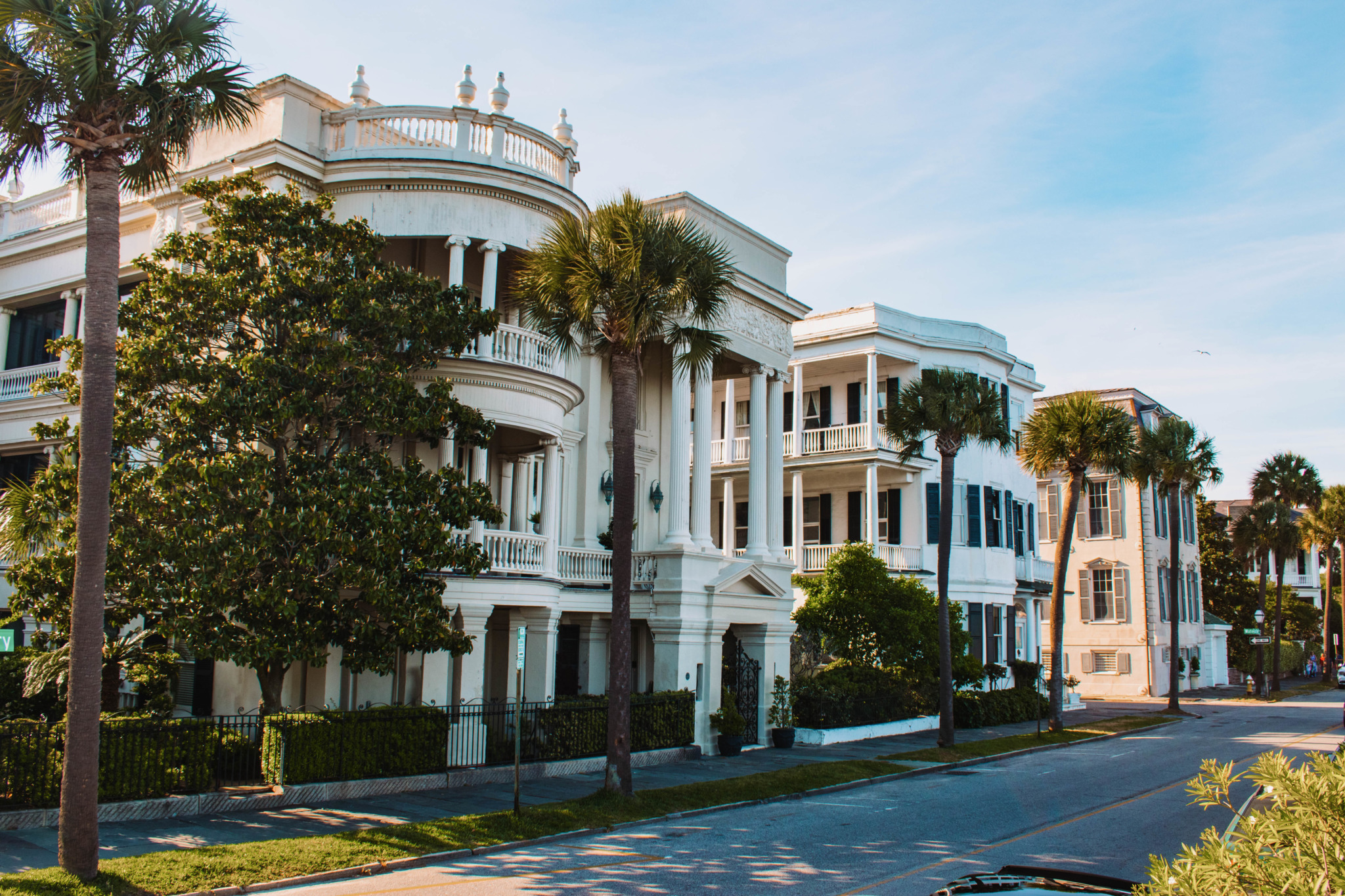
Charleston was started in 1669 when Captain West of England, set his sites on new land for economic gain for the crown. But coming here also meant religious freedom- you could be any religion and denomination. Now nicknamed the “Holy City” because of the 400+ churches here, you can’t miss the steeples (not skyscrapers) that dot the skyline of this bustling port city.
Life feels easier when you stroll the streets of Charleston, food tastes better, and the abundant sunshine punctuates the elaborate homes and awe-inspiring trees.
Here’s everything you need to know in order to plan the perfect trip to Charleston.
3 Day Charleston Itinerary
This area of South Carolina is called “lowcountry” because it is in the southern part of South Carolina and near the ocean marsh. While there’s lots to see and do, you can do it all in about 3 days.
What I loved about the city is the ease of getting around. You can simply stroll, get lost, and run into something beautiful and historical. Three streets to remember are King Street, Meeting Street, and East Bay – which run parallel to each other and where most of the most historic buildings are located.
Here’s a map of everything I’ll be covering:
Getting Around Charleston
I highly recommend renting a car to get around Charleston. We actually flew into the airport in Savannah, and it was just under 2 hours to go from here to the Battery in Charleston. This also made it much easier to get out to the plantations and Hilton Head. We also had the benefit of seeing alligators on, literally, “Alligator Alley” on our drive over.
Charleston Day 1: Self Guided Tour of the Historic District
Get to know the city with a self-guided walking tour. Charleston is compact, so it’s easy to walk around the city in a few hours and stop for lunch or dinner after your walk.
Or, if you prefer, check out this guided walking tour.
Start your tour at the Battery, a jaw-dropping neighborhood with large mansions overlooking the port where the rivers Ashley and Cooper meet. In Battery Park you’ll walk through stately live oak trees, but the trees remind of something a bit more sinister. This is where pirates were hung and left with their bodies dangling as a message to other pirates. The Battery is the wall that protects the city of Charleston and used to be 20 feet high to protect from invaders. There are some controversial confederate monuments here so you might see people protesting around this area.

Walk around some of the streets and take in some of the beautiful mansions before heading up East Bay Street.
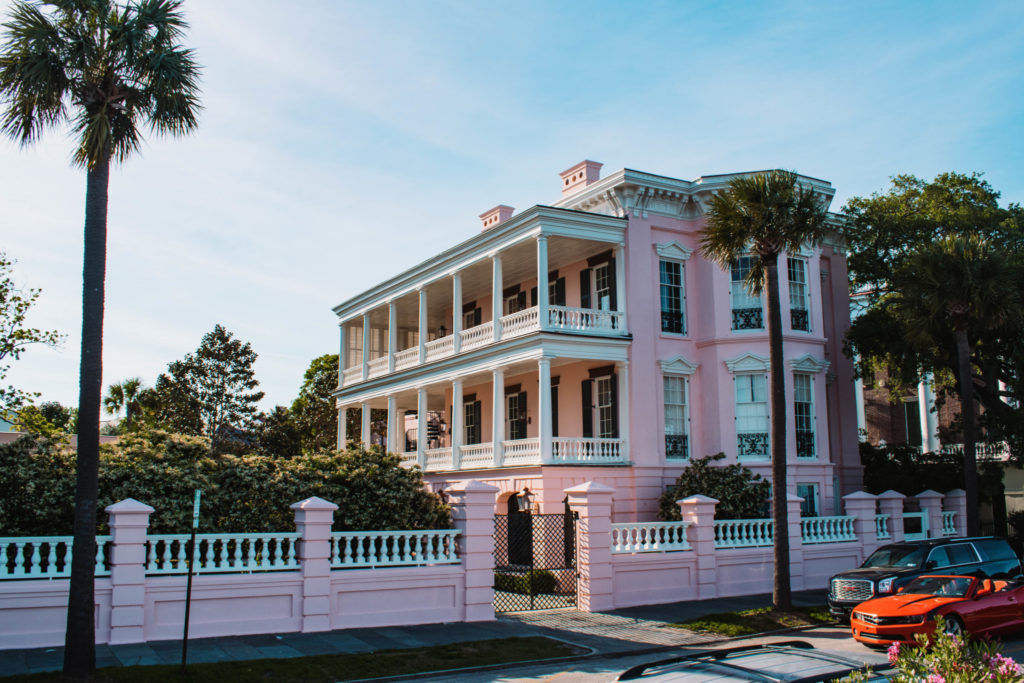
You can’t miss Rainbow Row. These beautiful, pastel colored buildings look like a rainbow. Built in 1680, Rainbow Row represents the longest cluster of intact Georgian row homes in the United States. Over the years the buildings served as shops and residences of metal merchants and planters.

Unfortunately, the area went into decay after the Civil War. In the 1940s, the city of Charleston fixed up and painted the 13 houses in pastel colors to honor their sister city Barbados. Better yet, National Geographic came and took pictures of the beautiful buildings. When Rainbow Row was featured in the magazine, this kicked off tourism to Charleston!

The nickname “Rainbow Row” stuck, and now people flock to see the colorful buildings. The houses look like the older style of Charleston homes. They were portrayed in “Porgy and Bess,” George and Ira Gerswhin’s opera based on DuBose Heyward’s novel “Porgy.” Heyward was a Charleston businessman fascinated by the Gullah culture. The novel and play deal with African American life in the early 1920’s.
After snapping some pictures, keep walking up East Bay Street for the Provost Dungeon and Old Exchange Building. While a beautiful city, Charleston does have some terrible history, particularly with the slave trade. Charleston was one of the largest slave trading cities in the US in the 1800s.
The area around the Old Exchange Building was one of the most common sites of downtown slave auctions. Thousands of slaves were sold here as early as the 1770s. Take some time to read through the historical markers around this area, or head into the museum. This important building has been the site of commercial exchange, post office, customs, city hall, military headquarters, and now a museum. The Provost Dungeon was also used as a military prison. The building has been visited by George Washington, and the US Constitution was ratified here.
As you make your way up the street, you’ll start to see many bars and restaurants.
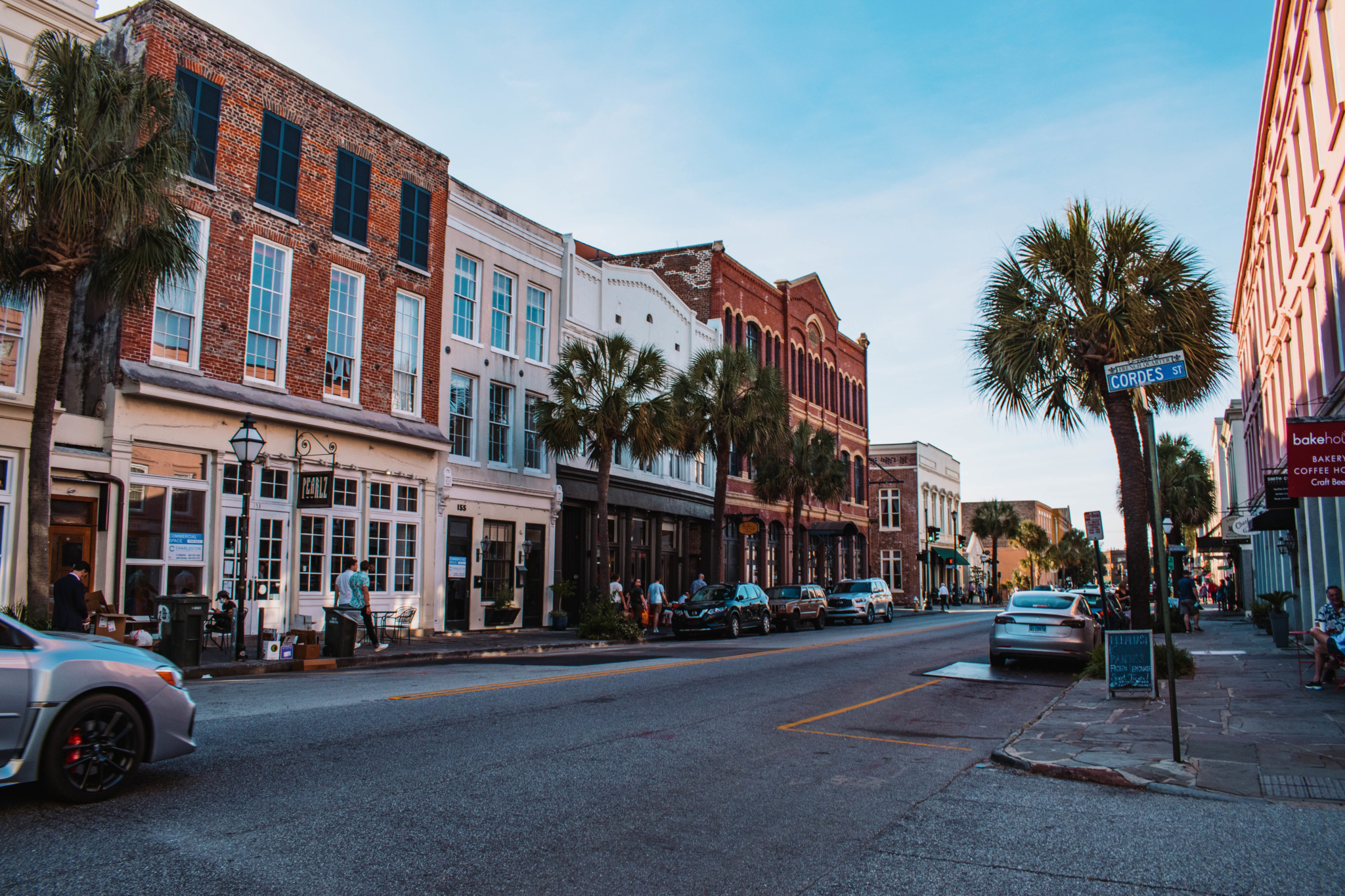
Make sure to turn to your right, towards the water, and walk out to Ravenel Waterfront Park. Here you’ll see people weaving baskets and roses out of sweet grass. Walk around for the view of the harbor as well as the famous Pineapple Fountain.
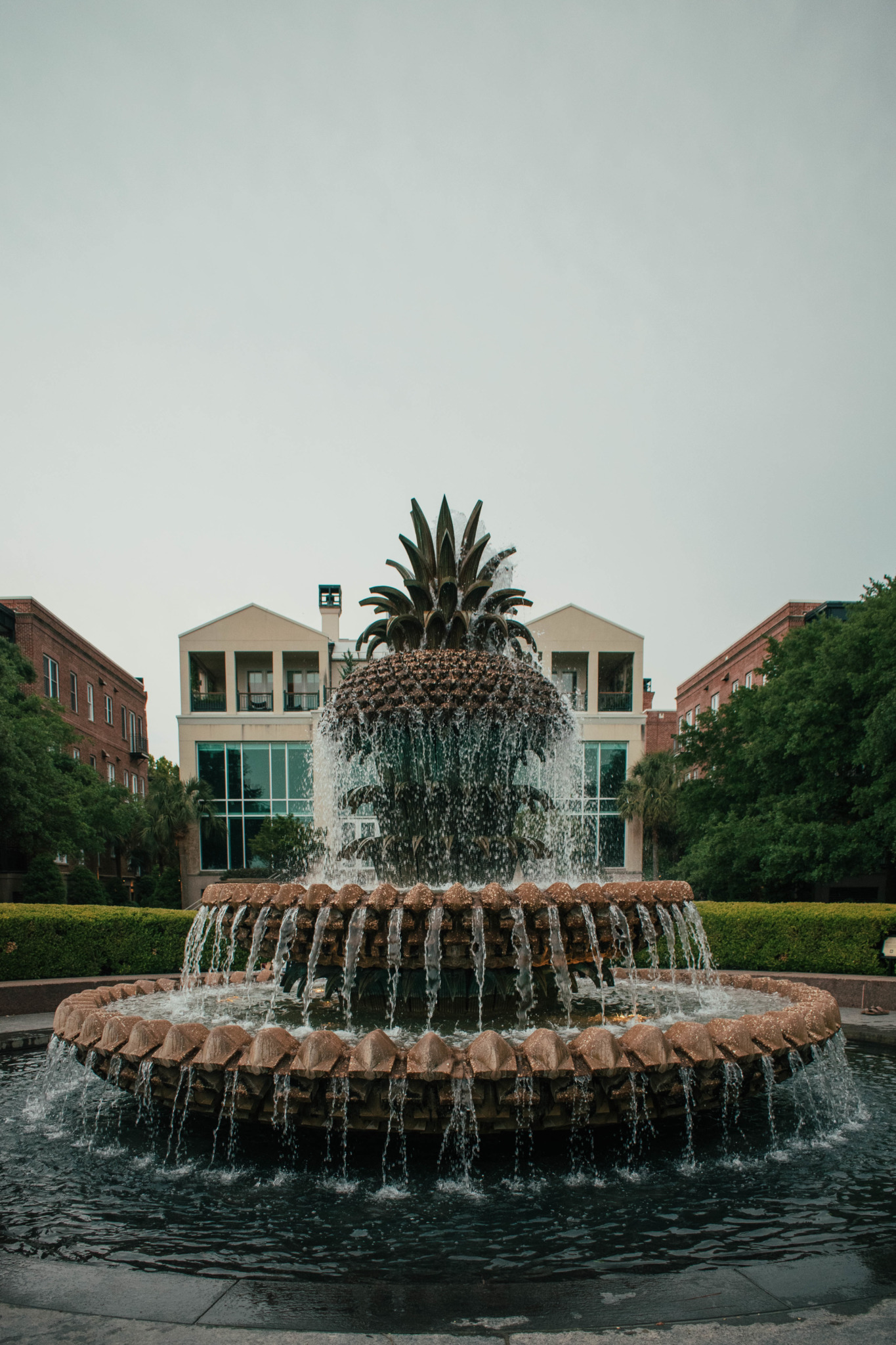
Now, keep walking up and hook a left on Market Street to head to the Charleston City Market. It’s easy to get around when all the names of streets are literal! Dating back to 1680, Charleston City Market is one of the oldest public facilities in continuous use in Charleston. Here you’ll find both a daytime and a nighttime market. The day time is more traditional crafts, souvenirs, and handmade jewelry and opens daily. The night market has more modern offerings and even has live music but usually only opens on the weekend. When the Pinckney family ceded the land to the City of Charleston for a market, he had three rules: 1. City market 2. Closed on Christmas 3. No slaves could be sold here.
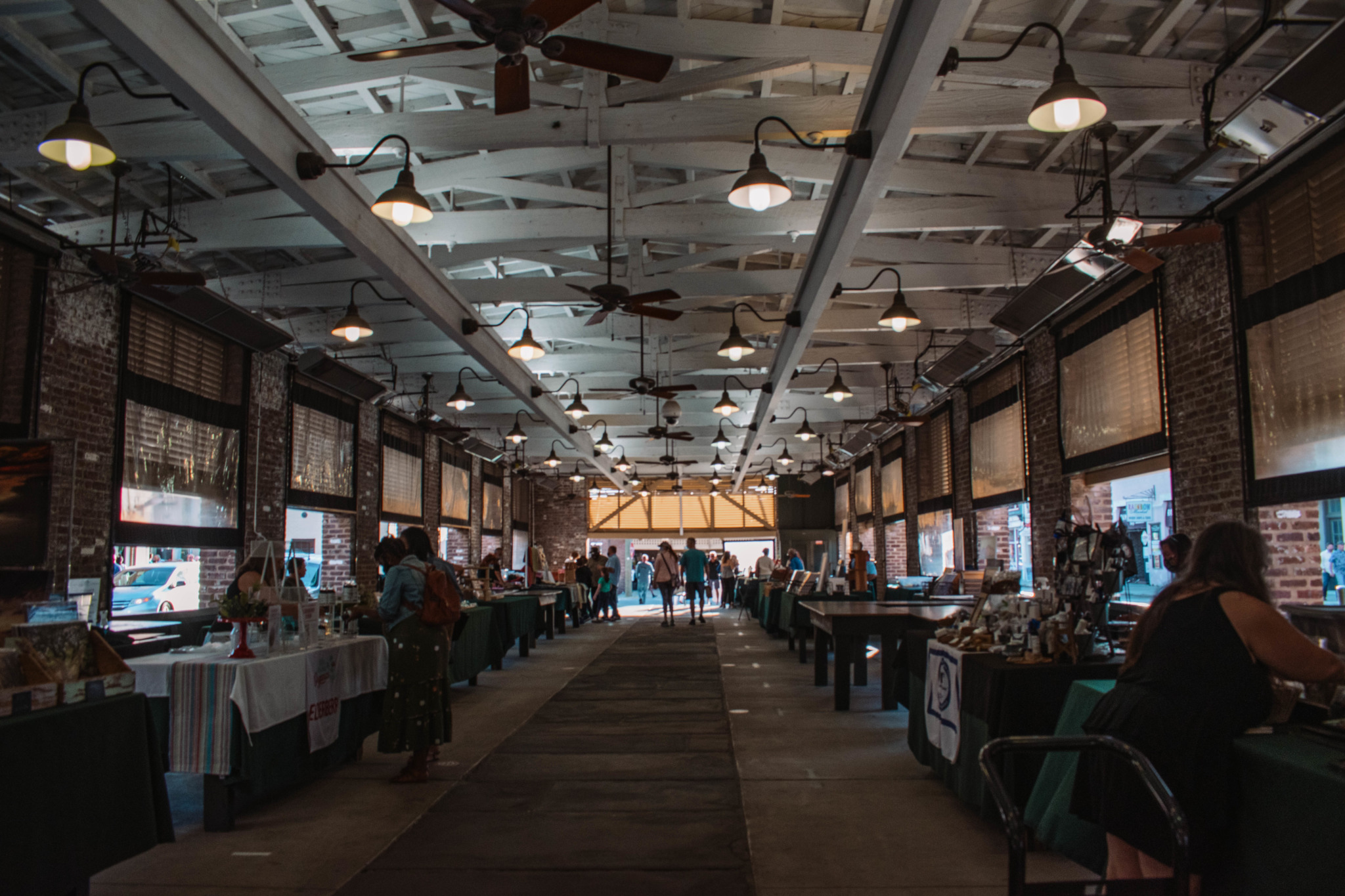
To circle back, we’ll walk down King Street, aptly named for King Charles himself. Originally called Charles Town (instead of Charleston) the street is considered to be the 3rd biggest shopping district in the USA! So if you’re looking to shop this is the perfect spot. You’ll also notice beautiful iron work, a beautiful theater, and high end stores.
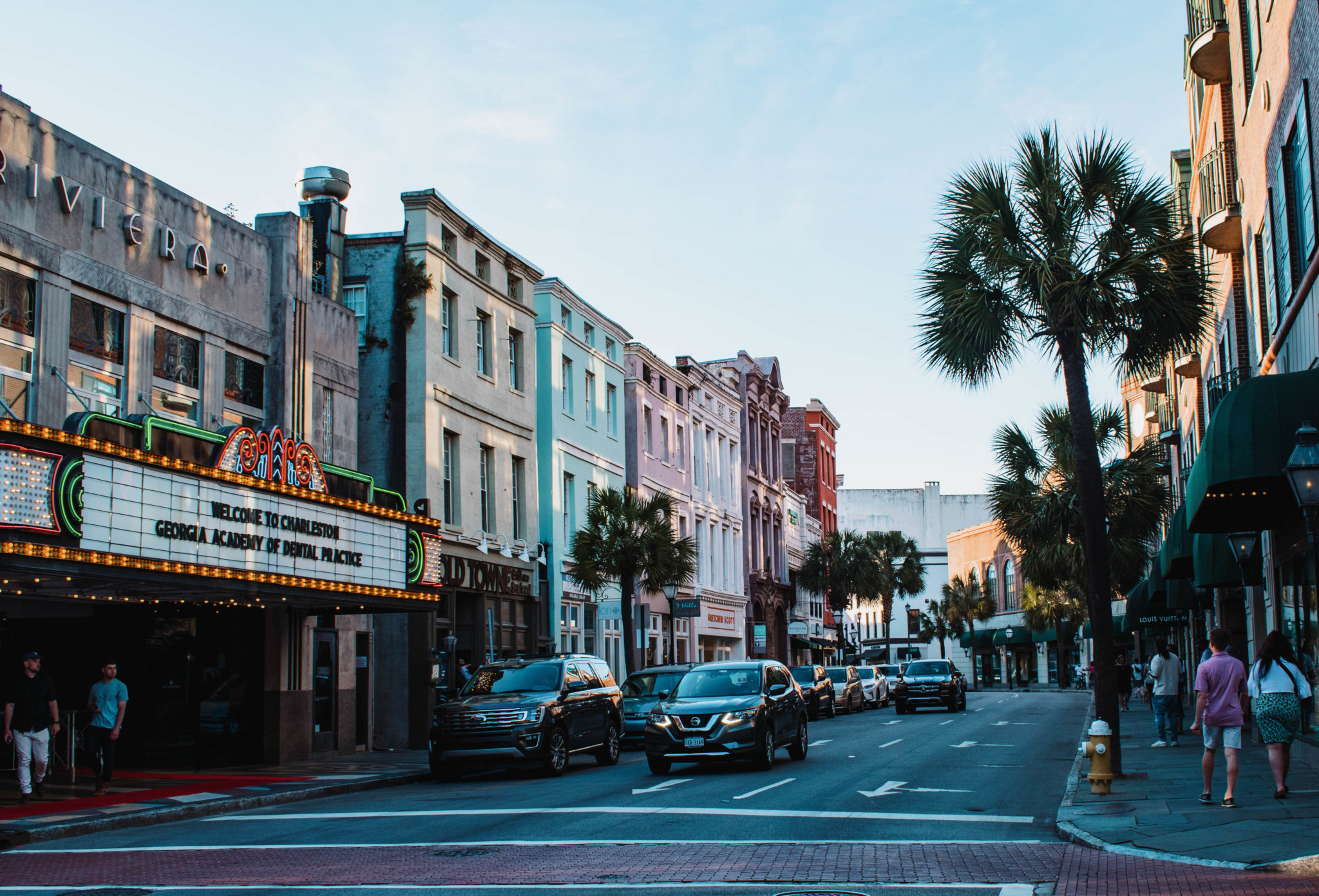
As you walk around, notice that no building is taller than 70 feet high, which is the height of the tallest steeple, St. Matthew’s Church.
After a day of walking around the city, have dinner at Chubby Fish or the ever popular Husk.
Charleston Day 2: Day Trip to Plantations + Ghosts
Kick off with breakfast at Callie’s Hot Little Biscuit for filling, delicious biscuits. There are a couple locations in Charleston so you’ll surely find one near you.
In the morning we opted for a shuttle tour – this was a great way to cover lots of ground and gain an understanding of the city. There are also horse and carriage tours as well as walking tours. I’m a huge fan of taking a tour in order to get my bearings and an understanding of a city.
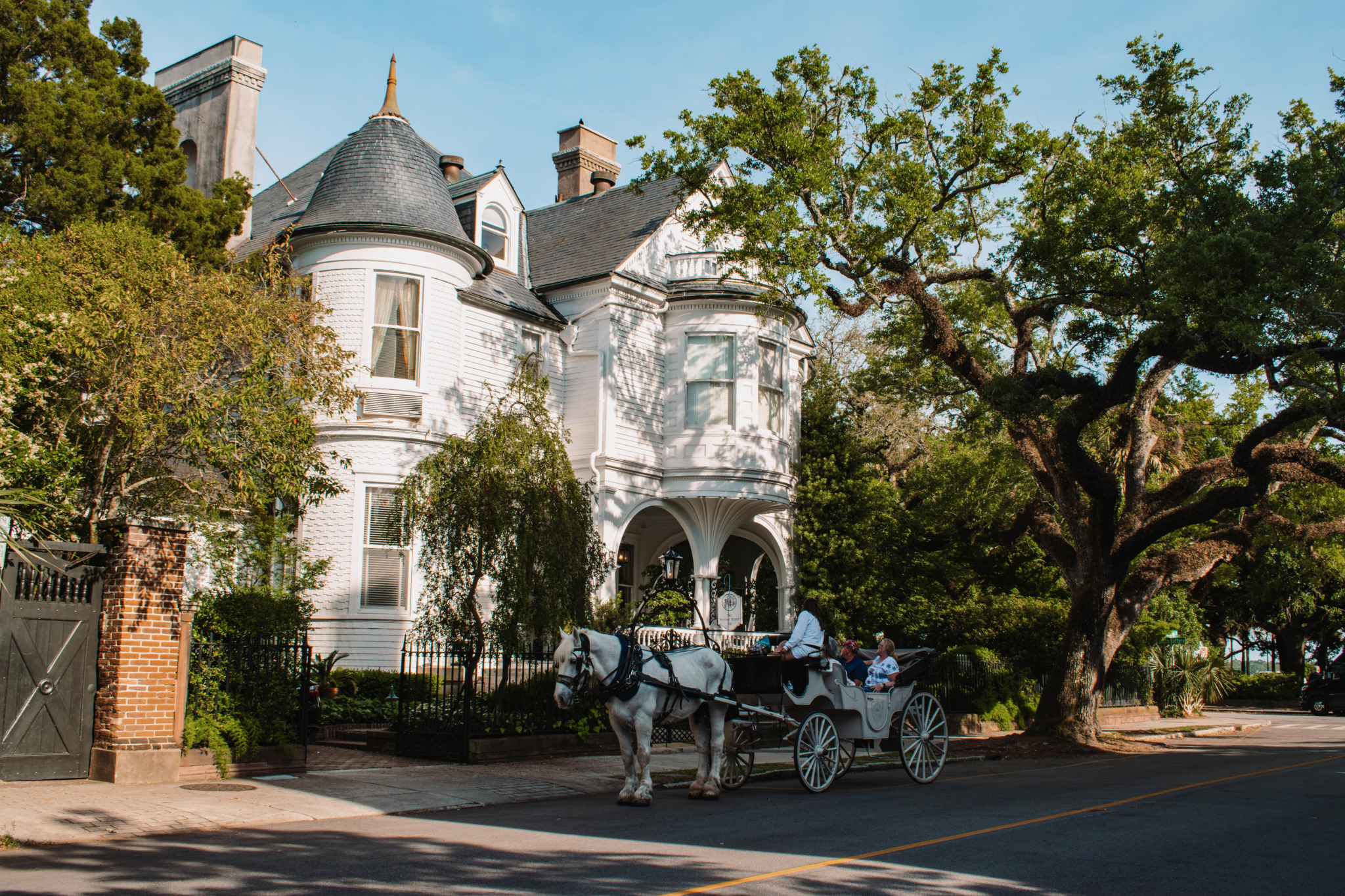
I learned so much about some of the buildings, the culture, and even the cuisine, I would never know otherwise.
While the English clearly had a huge influence on Charleston, after settling here in the late 1600s for religious freedom, one of the other larger groups that came here were Germans. If you notice the iron work, this is most certainly hand done by the Germans. An example of this is at the 1734 St. John’s Lutheran Church, with handmade wrought iron by Christopher Werner.
The French also had a large impact. Much of the downtown area is called the “French Quarter” where the French settled. This is also the art district in town and you’ll find lots of art galleries and cocktail bars.
You’ll notice that there’s no modern architecture allowed in Charleston City Center as it’s required to build in traditional single house style. But all of the houses seem narrow then go straight back. There’s a reason for that. Property taxes were on the width, not the length, which is why they’re built so narrow and deep.
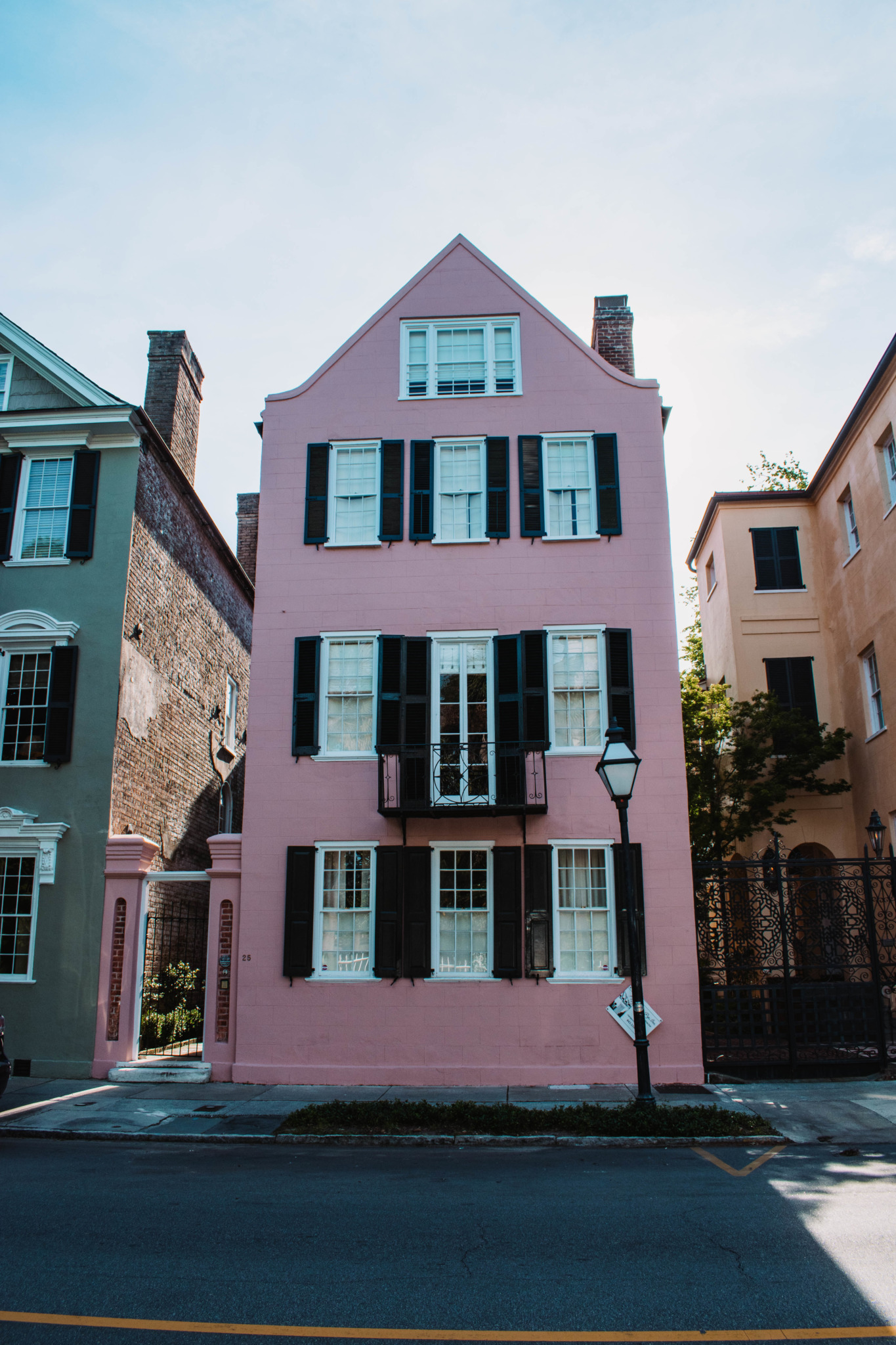
After a tour, hit the road to a plantation. It’s anywhere from 20 to 40 minutes outside of the city center to go to these sprawling estates. Charleston was one of the richest cities in the USA and the reason for that was slavery. While slavery was not only in the plantations, slavery played a huge role in the success and riches for the plantation owners. Growing indigo, cotton, and “Carolina Gold” rice, was back-breaking labor. Visiting the plantations is, of course, beautiful, but it’s also important to understand the history here.
Over the years, plantations have refocused much of their tourism to more heavily focus on slavery and its impact.
Over our 3 days we went to 3 different plantations: Boone Hall, Magnolia, and Middleton. If I had to only pick one, I’d suggest Boone Hall as I think they did a phenomenal job on sharing the history, it’s a beautiful property, and you can even tour the house.
As you make your way down the Avenue of Oaks towards the house an arch of live oaks reaches out with a lacy canopy of Spanish moss, it’s a jaw dropping sight.

Boone Hall offers plenty of activities. You can take a tour of the house and the brick slave cabins which each tell a story of what the slaves endured. Lastly, I highly recommend going to a few of the talks offered. We heard a fabulous talk from a woman who spoke, sang, and educated on the Gullah people and dialect. Gullah is a word used to identify sea island descendants of enslaved Africans who developed their own language and customs that are passed down through the generations. Their influence is far reaching, from the delicious flavors of Lowcountry cuisine, art, music, and language.
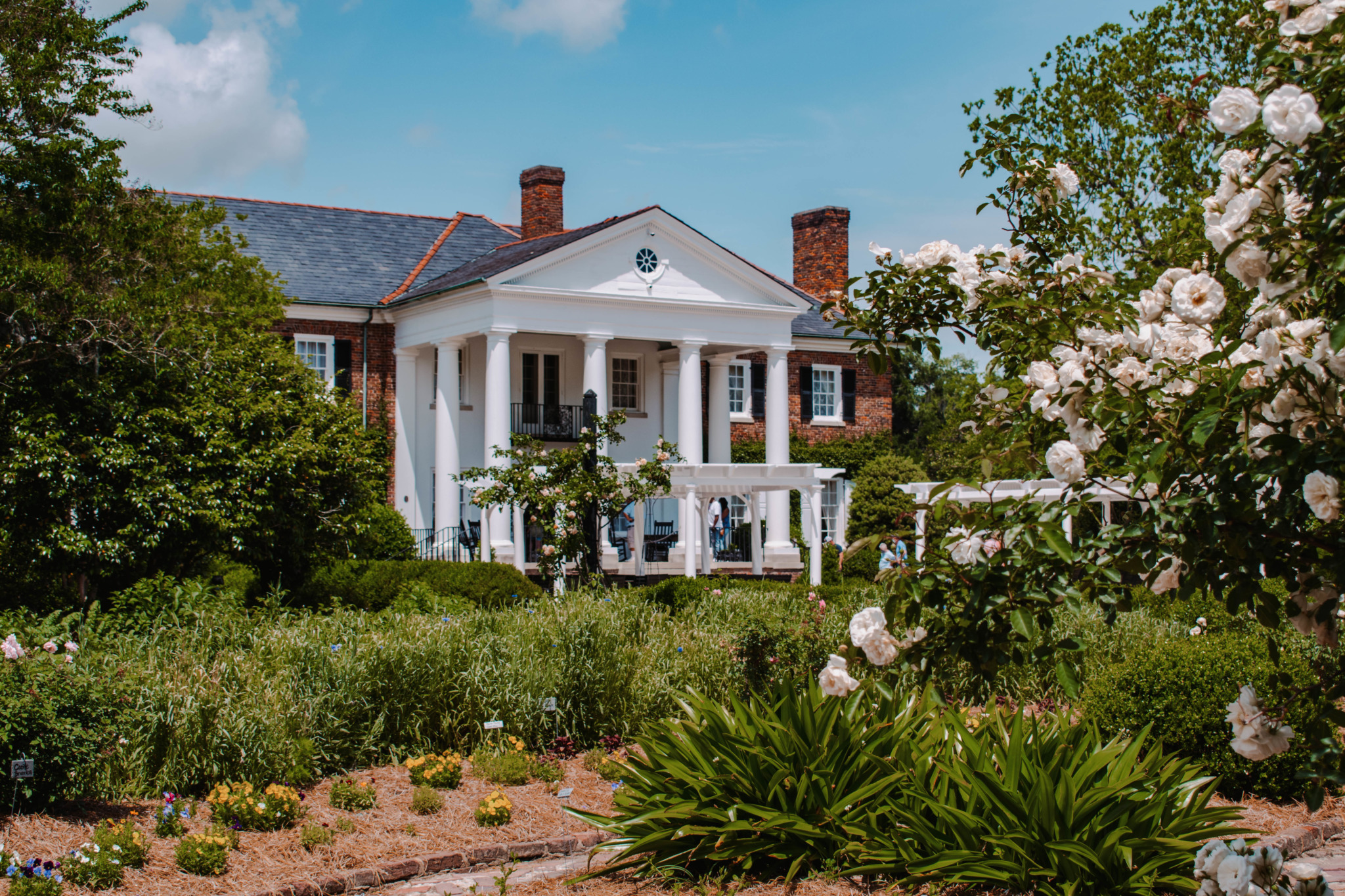
What I loved about Boone is that they don’t try to sugarcoat their past but present a real picture of what really happened here.
Magnolia Plantation
Magnolia Plantation is more focused on their outdoor spaces. There are beautiful bridges and pathways you can take to explore the gardens. There are tours here as well that share more about slavery that took place on the plantation.
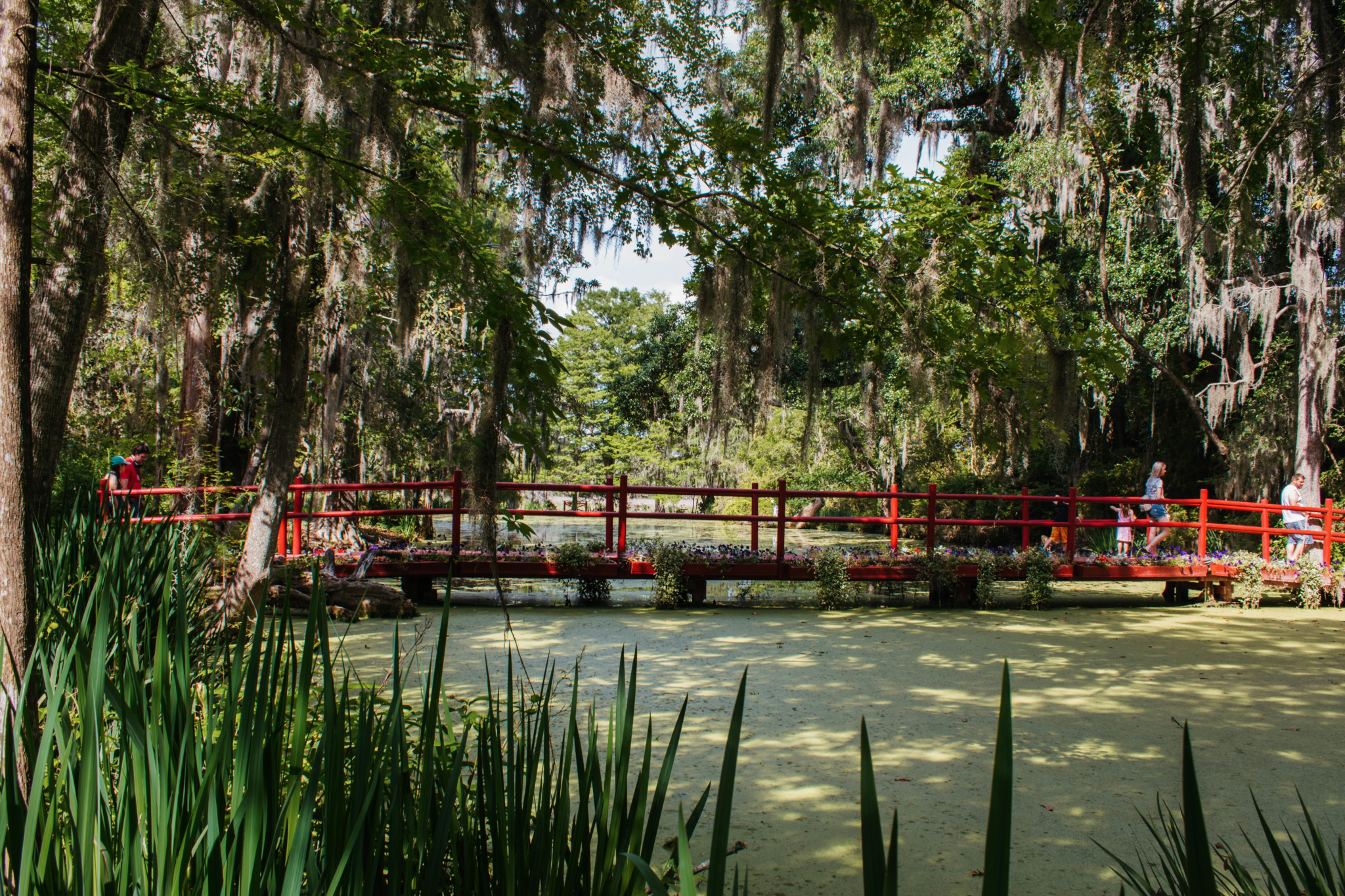
Magnolia Plantation leads you right by the marsh and pathways are dappled with sunlight and moss strewn trees waving in the wind as you pass by. The trees look as if they could whisper secrets from the past and jasmine perfumes the air. But do watch out for alligators! We saw one right near a path in the swamp.
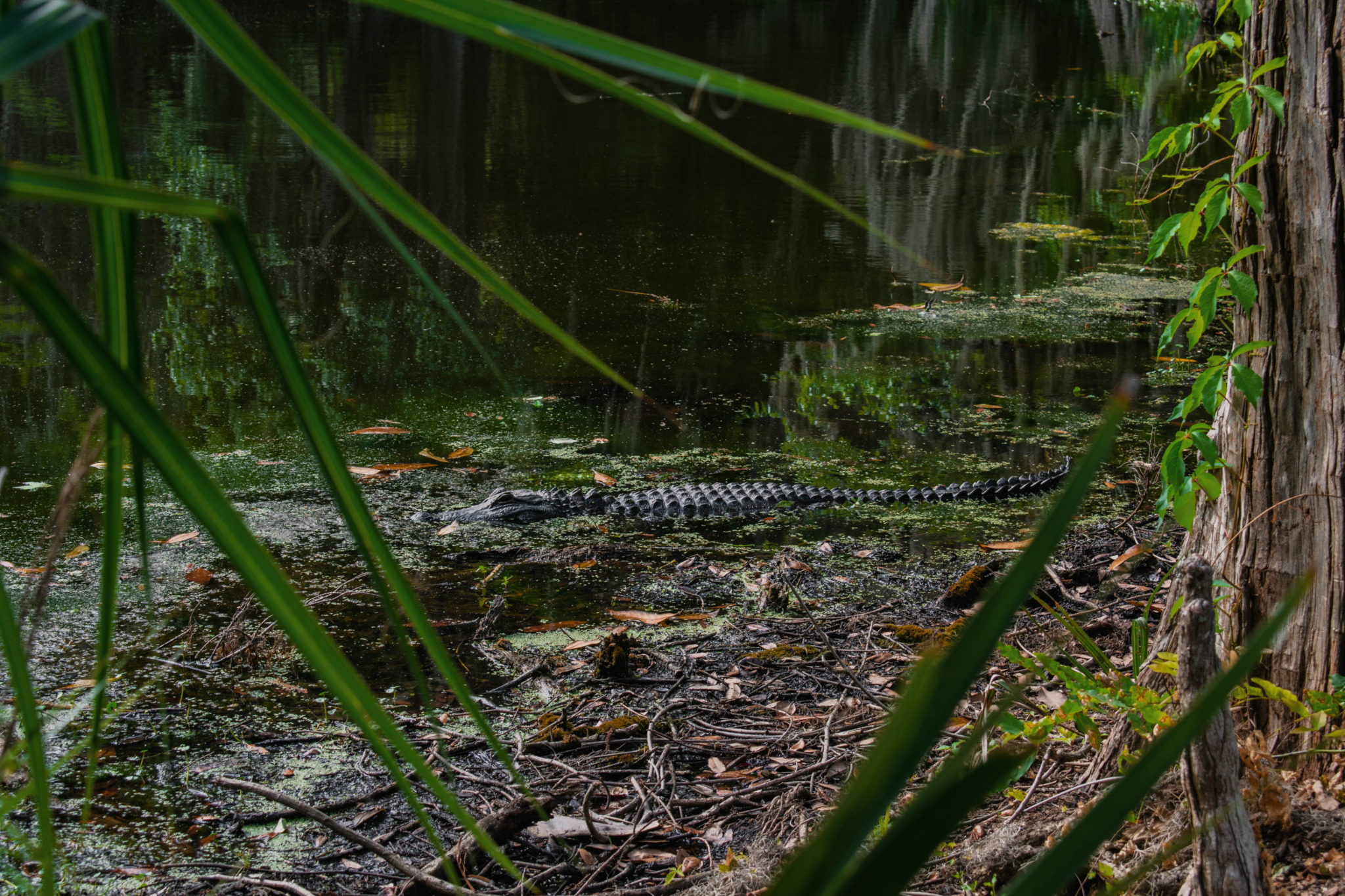
This is America’s oldest public garden complete with a Carriage House, Veranda, and Conservatory along with a gorgeous natural landscape.
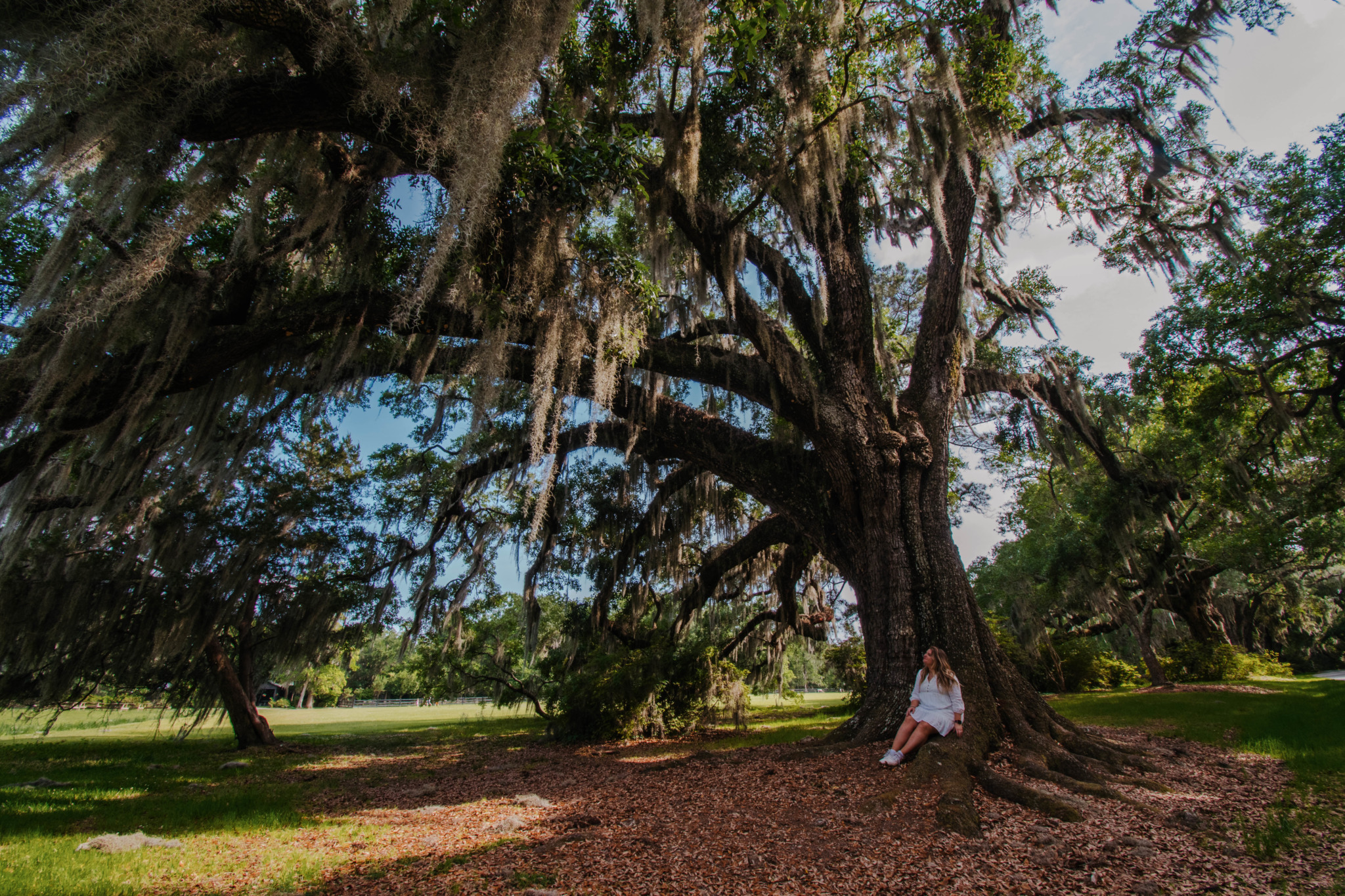
Middleton Plantation
Middleton’s historic working plantation has live craftsman and animals showing how it used to in the 17 and 1800s. Again you’ll find large, lushes oaks on the property but the Middleton Oak is one of the oldest and estimated to be between 800 and 1,000 years old.
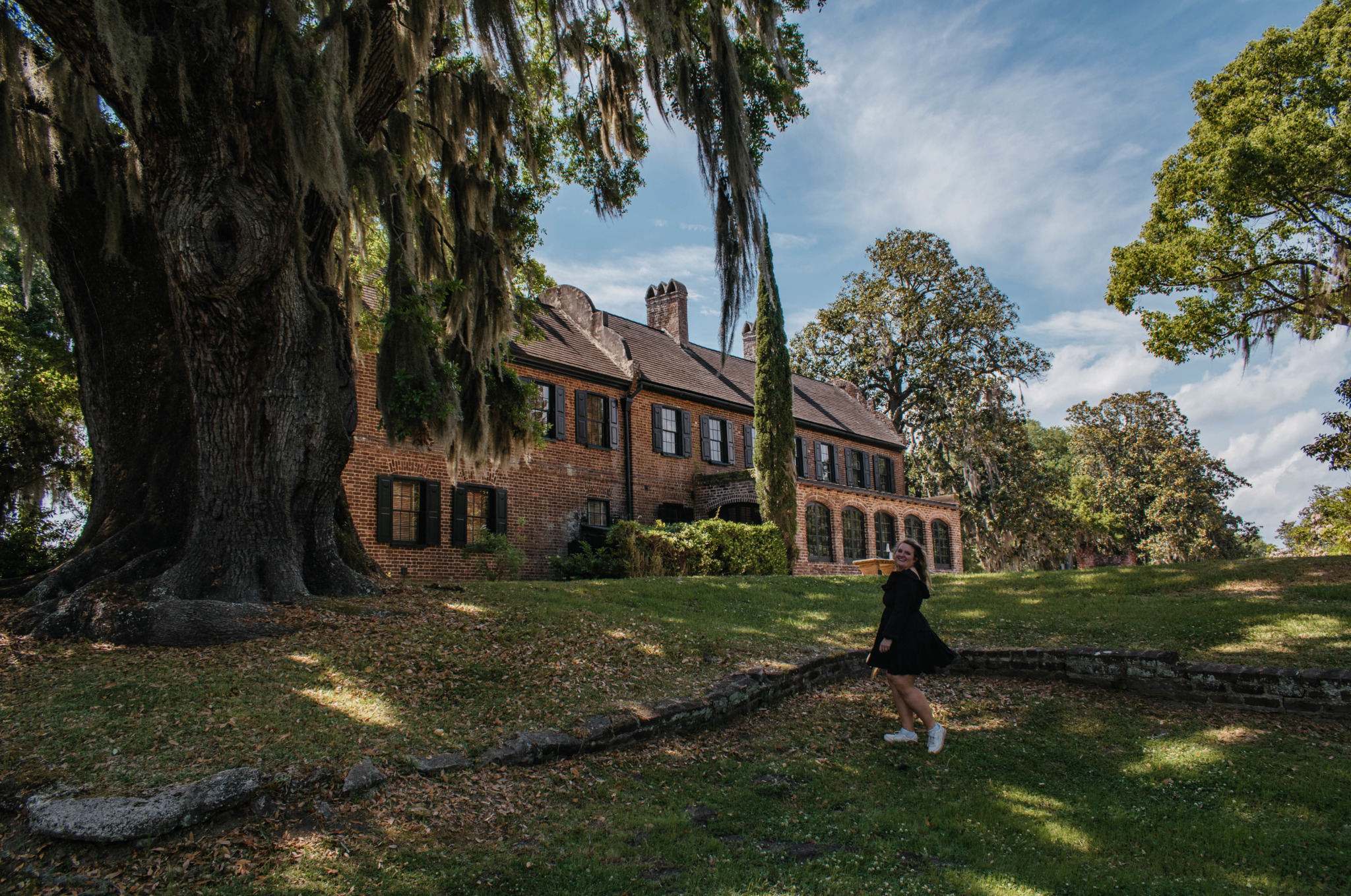
You can watch craftsmen work, hear about the hardships of the slaves as well as their escape tactics, and learn more about plantation life.
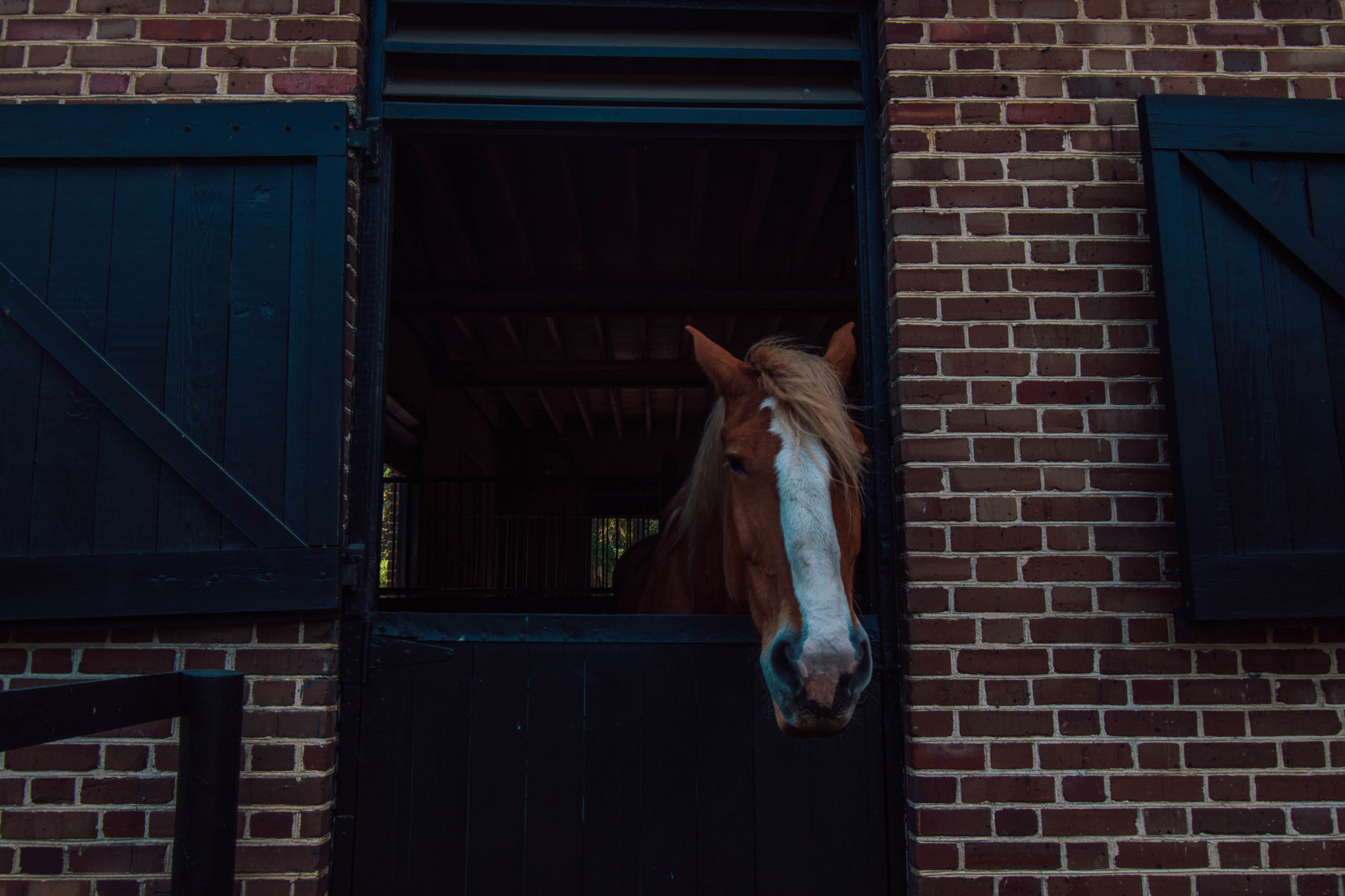
For dinner, have barbecue at Rodney Scott’s. I had the best hush puppies of my life along with beans and a pulled pork sandwich.
End the day with a ghost tour in the Old City Jail. Open for 137 years and shut down in 1939, the jail NEVER had running water, AC, or electricity. The average life expectancy here was 3 weeks. 14,000 people died here! Now, this is considered to be one of the most haunted buildings in America. The stories here are downright some of the creepiest.
Don’t forget to take Charleston in at night- it’s lit up beautifully!
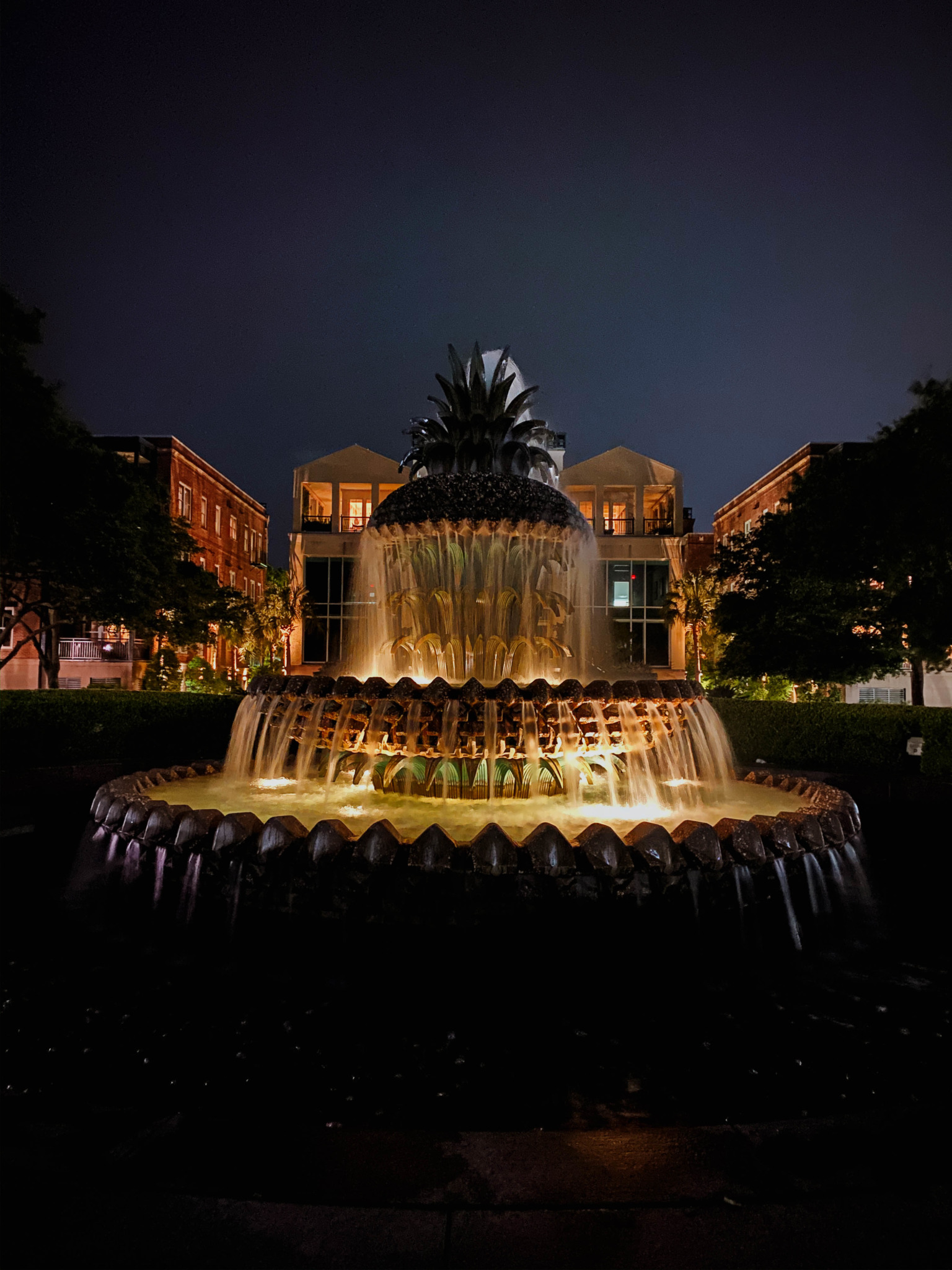
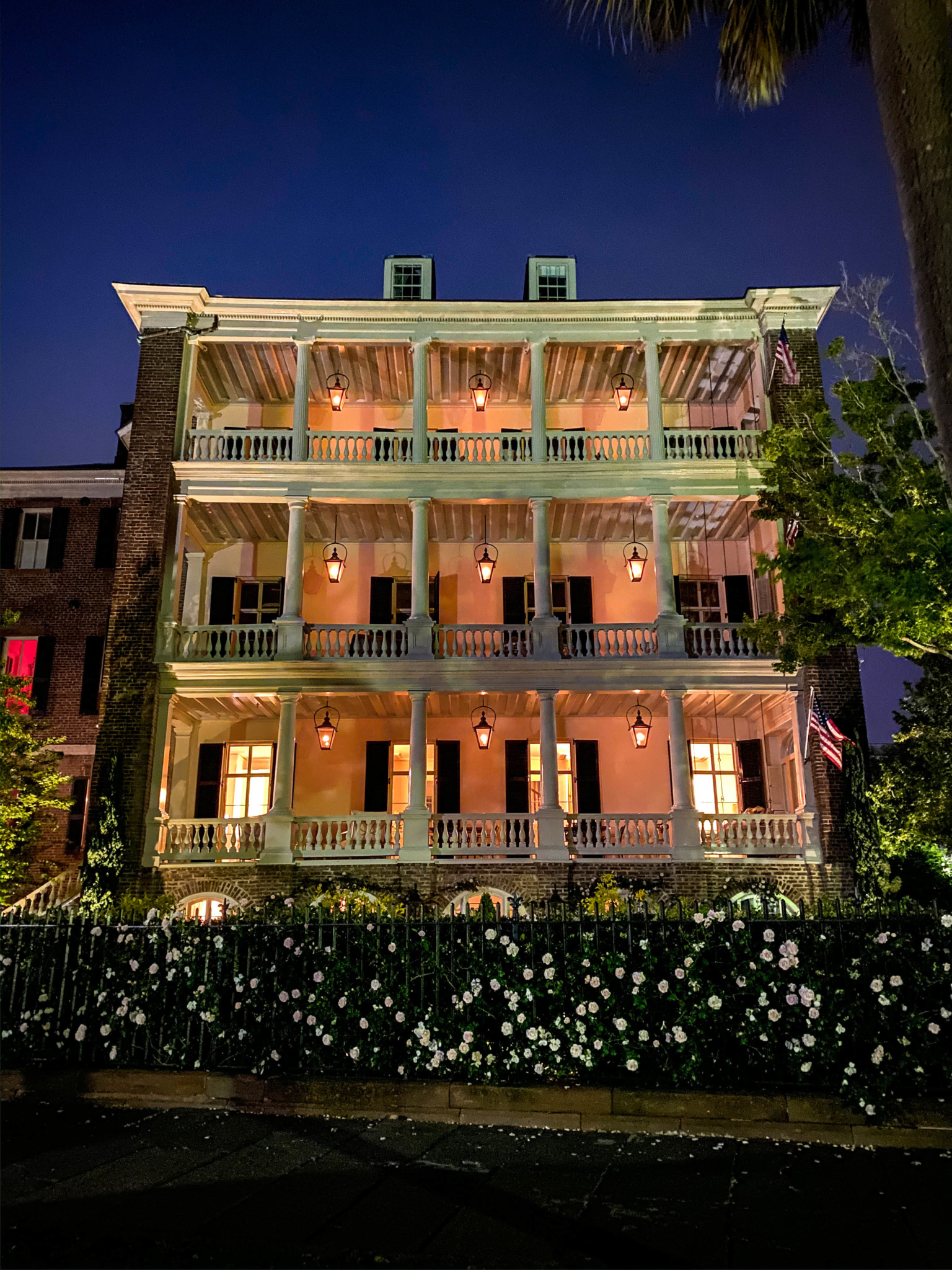
Charleston Day 3: Beaches & Angel Tree
One of the great things about being in Charleston is the access to the coast. Folly Beach is one of the most popular beaches (and closest to Charleston) with shops and restaurants. This long and wide stretch of sand is easy to walk and a great place to hunt for shells. Nicknamed the “Edge of America” this is a laid back beach that’s also great for late nights.
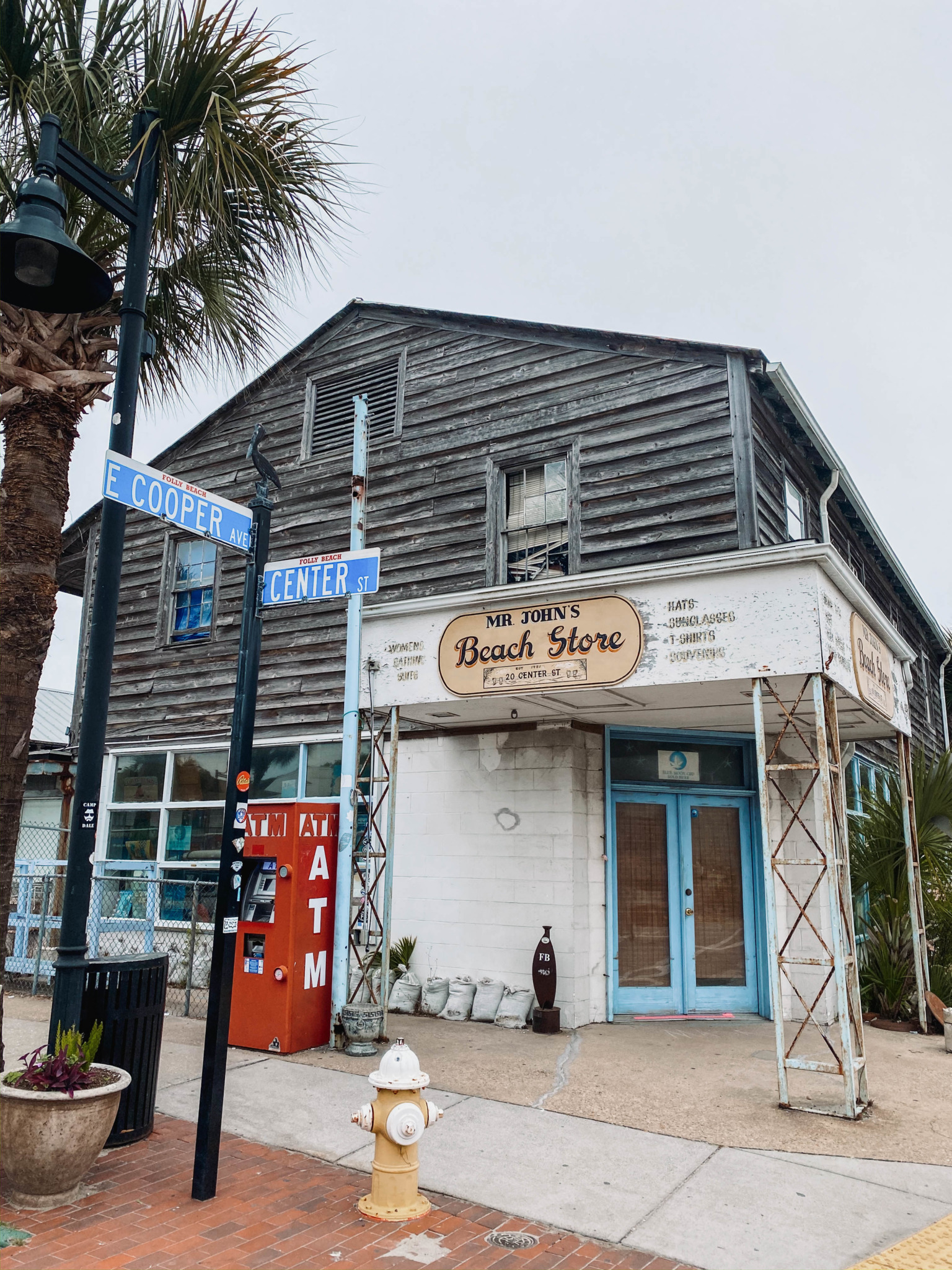
We ate lunch on the beach and watched as the early morning fog moved out.
Next, head to one of the most magnificent trees in the entire world: the gargantuan Angel Tree. While this is a short stop, it’s worth it to make the journey. This well preserved 500 year old tree has a gargantuan trunk and branches nearly as long as a football field.

Charleston is nicknamed the “Holy City” for a reason, 400 churches are here alone! Head over to St Michael’s Church, where George Washington and Robert E Lee and Teddy Roosevelt came to worship. The church is the oldest surviving religious structure.
There are plenty of churches around the city, so take a peek inside a few.
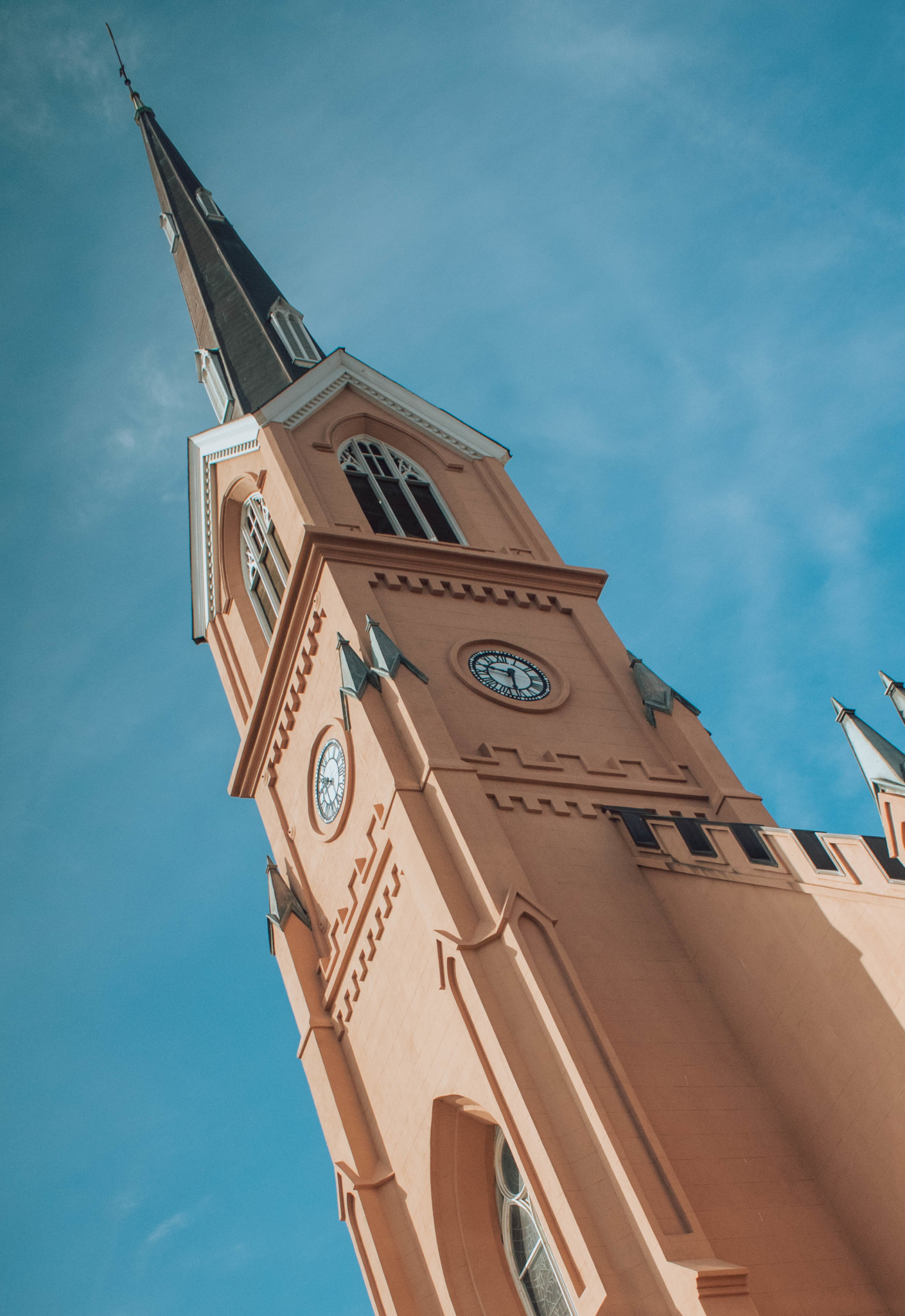
If you want to see the most expensive homes in Charleston, head to South of Broad, where the homes are an average of $2.5 million! You can take a tour of the sprawling Williams Mansion, the largest private residence in the city of Charleston. With stunning Italianate architecture, 26,000 square feet, and 30 bedrooms you can spend a couple hours wandering here.
Finish your time in Charleston with rooftop drinks at Vendue. This spot with give you the best vantage point of the city while you sip chilled cocktails.

Where to Eat in Charleston
Make reservations or be prepared to wait about an hour+ for dinner. I don’t like waiting, even if it is for delicious food. Charleston reminds me a bit of New Orleans or Paris, in that you would be hard pressed to find a bad meal so keep your plans flexible or plan ahead with reservations. Just check reviews to make sure!
Our first night in Charleston we learned this the hard way. After trying 4 different restaurants, and even driving 20 minutes outside of the city, we simply couldn’t find anywhere to eat that didn’t have a long wait. So… we headed to Walmart and had Ramen for dinner! Not ideal. The rest of our trip we made reservations and had absolutely delicious meals.
Here are my recommendations on where to eat, as well as recommendations I got from locals:
Rappahannock Oyster Bar– You can make a reservation online. Start with oysters, we got two of each kind on the menu. Then split two entrees. First up, fish Milanese which was pan fried fish in panko bread crumbs with salad. This was some of the best fish I’ve had in quite a while. Then we split a shrimp po’ boy, on soft bread with perfectly fried jumbo shrimp with tomatillo salsa verde and house made chips. Perfection.
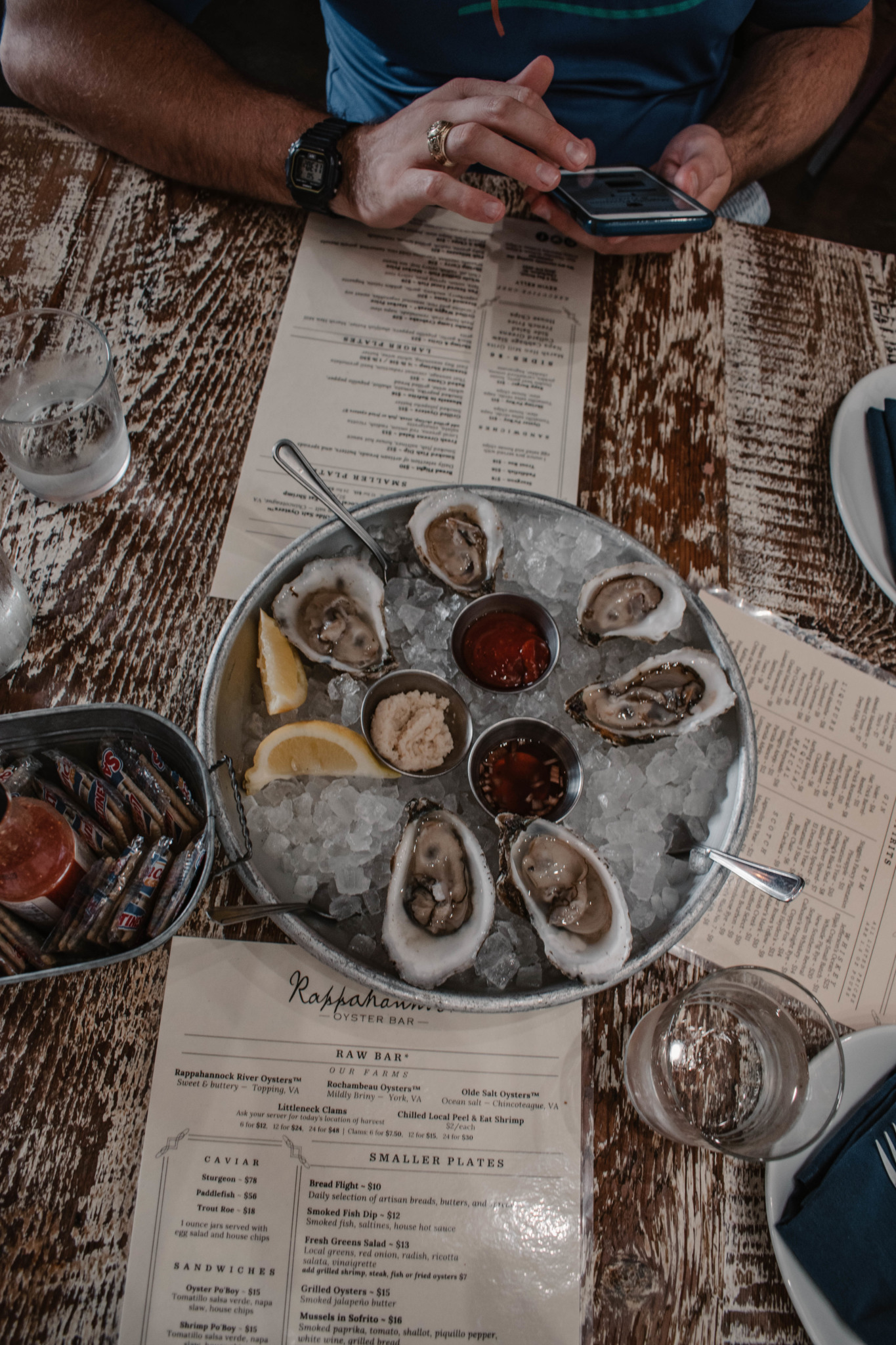
Husk – You need to make reservations here weeks (if not months!) in advance. Using only ingredients from Southern farmers, the menu changes often. Situated in a restored Victorian era home you can’t go wrong with anything on the menu.
Callie’s Hot Little Biscuit – for a filling grab and go breakfast, but be aware, you might have to wait in line!
Rodney Scott’s – winning a James Beard award for BBQ, you’ll find delicious, hardy portions and the best hush puppies around.

Chubby Fish – located just north of town in a neighborhood setting, this area reminds me of Uptown New Orleans. This small, intimate restaurant serves up great seafood.
Jackrabbit Filly – an Asian-fusion restaurant started from a food truck. This inventive menu will be a nice break from seafood and BBQ fare.
Maison – echoing the French heritage of Charleston, this bright restaurant offers a seasonal menu with a $5 champagne happy hour.
Hannibal’s Kitchen – Lowcountry delicacies are served in this classic restaurant. This is soul food and seafood at its best in a casual atmosphere.
Coast – tucked away on a little alleyway you’ll find coast. Traditional seafood dishes. Skip the appetizers and stick to the mains. I went with braised grouper over truffle bacon and mushroom grits – divine!
Where to Stay in Charleston
Hotel Bennett – This landmark hotel is in the heart of Charleston on Upper King Street and definitely one of the best places to stay in Charleston. This is a Preferred Hotels & Resorts property (which means this is one of the best hotels you can stay in!) and is luxurious and lovely.
Staying around West Ashley you’ll find cheaper hotels since you’re not in the heart of downtown. Since it’s only a 10-15 minutes drive to downtown, it makes it an easy choice. Best Western here is a great budget friendly option.
Grand Bohemian Hotel is in Charleston’s historic district and is an upscale, modern and artfully decorated hotel. There’s also a beautiful rooftop terrace.
When to visit Charleston?
If you don’t want to melt, come in late fall, winter, or spring. Spring is when you find bright green trees and flowers in bloom so this tends to be my favorite time. Summer is hot and there are more tourists so I suggest avoiding Charleston then!
The best time to visit Charleston is in late fall, winter, or spring, particularly during the latter when the trees and flowers are in full bloom, and the weather is pleasantly mild. However, if you want to avoid the scorching heat and crowds of tourists, it’s best to steer clear of the city during the summer months. Now that you’ve sorted out your accommodation and travel dates let’s explore some extra things to do during your stay in Charleston.
Charleston, South Carolina is a popular destination year-round, but the best time to visit depends on your interests and preferences. Here is more information on the best time of year to visit Charleston, taking into account weather and seasonal events:
Spring: Spring is a beautiful time to visit Charleston, with temperatures ranging from the mid-60s to mid-70s Fahrenheit. The city is in full bloom, with azaleas, wisteria, and dogwoods adding pops of color to the landscape. In April, the city hosts the Charleston Wine + Food Festival, which attracts foodies from around the country.
Summer: Summer in Charleston can be hot and humid, with temperatures in the mid-80s to mid-90s Fahrenheit. However, the city comes alive with outdoor festivals, concerts, and events, such as the Spoleto Festival USA, which showcases performing arts from around the world. The summer months are also the peak tourist season, so expect larger crowds and higher prices.
Fall: Fall is a popular time to visit Charleston, with milder temperatures ranging from the mid-60s to mid-70s Fahrenheit. The fall foliage adds to the city’s charm, and there are plenty of outdoor activities to enjoy, such as hiking and kayaking. In November, the city hosts the Charleston Food and Wine Festival, which celebrates the region’s culinary traditions.
Winter: Winter in Charleston is mild, with temperatures ranging from the mid-40s to mid-60s Fahrenheit. The city is less crowded during this time, making it a great option for those who prefer a quieter atmosphere. In December, the city hosts the Charleston Christmas Parade and Festival of Lights, which features holiday-themed events and activities.
Overall, the best time to visit Charleston depends on your interests and preferences. Spring and fall offer milder temperatures and seasonal events, while summer is the peak tourist season with a lively atmosphere. Winter is a great option for those who want to avoid the crowds and enjoy a quieter getaway.
Extra Things to Do in Charleston
The Frampton House got its name from the owner and builder John Frampton who along with his brothers shared thousands of acres in what is now Beaufort & Jasper counties. Originally a King’s grant to the owner in the early 1700s, Frampton House was divided into working plantations. This stop is very easy to get to if heading to or from Savannah.

Carolina Cherry Company is located just off the side of the road in an adorable coffee and bake shop. You can try all sorts of home brewed ciders. We opted for peach- it was delicious! And we sipped on this for our entire trip.
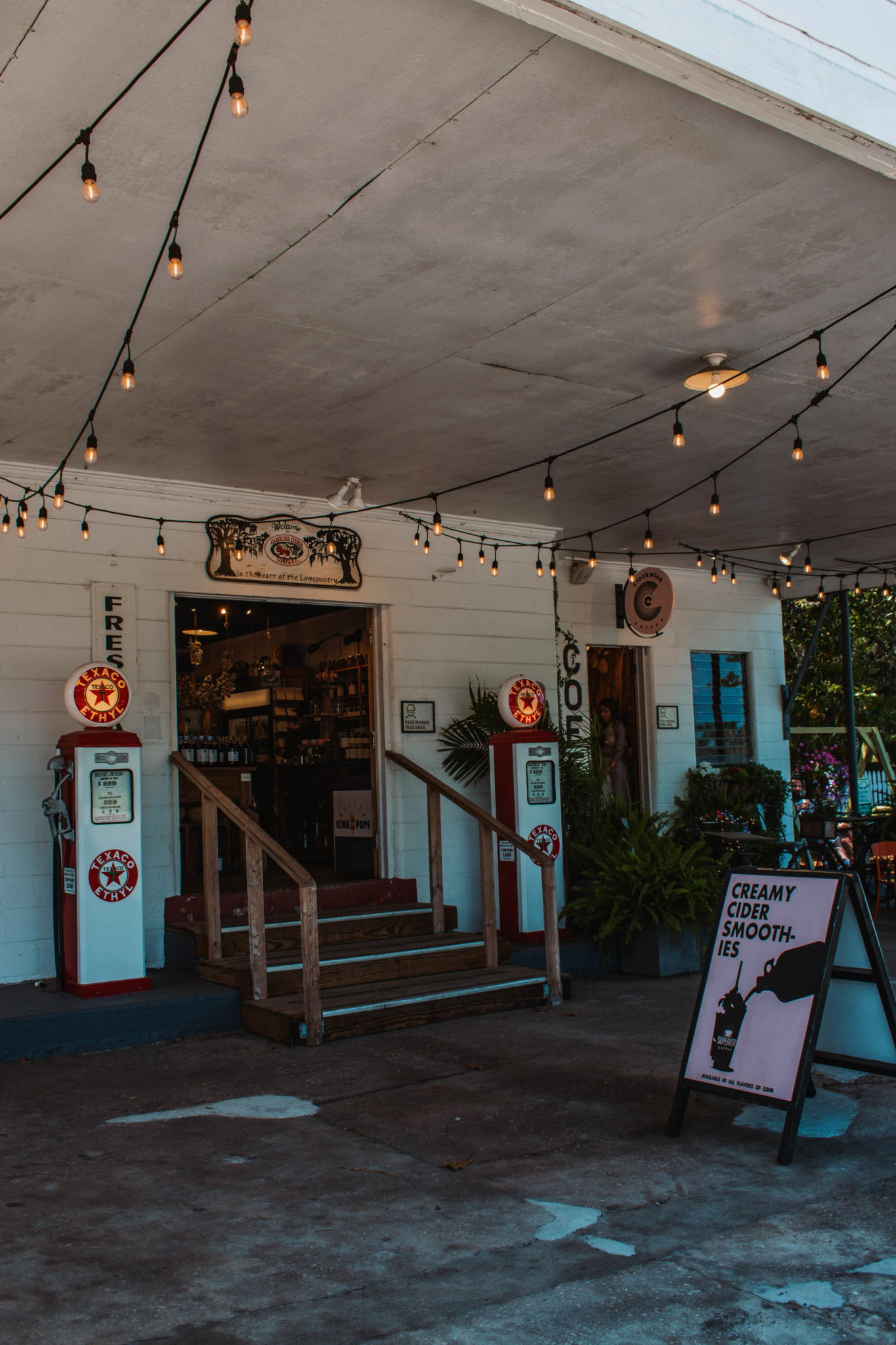
Fort Sumter is where the American civil war began. On April 12, 1861, the confederate troops gathered in gun ships and started to fire at Fort Sumter and these were the first shots of the civil war. If you’re wanting to visit, the fort is only accessible by boat.
Prince William Parish Church, or Old Sheldon Ruins is a historic site about 30 minutes outside of Charleston. It had just rained, so we got to see the Resurrection fern in it’s full glory sprouting in bursts on the trees.
One of the best ways to see a city and learn it’s history is by taking a food tour. Learn about Charleston’s unique cuisine and sample some of the best food with a live guide. This tour is about 2 and a half hours. I always love a good food tour!
Budget breakdown for a 3-day trip to Charleston, South Carolina:
Accommodation: The cost of accommodation in Charleston can vary depending on the type of hotel or rental you choose. Budget options such as hostels and budget hotels can start from around $50 per night, while mid-range hotels and vacation rentals can cost anywhere from $100 to $200 per night. For a three-night stay, the total cost of accommodation can range from $150 to $600.
Transportation: Charleston is a walkable city, so many of the main attractions can be reached on foot. However, visitors may still need to use public transportation, such as buses or taxis, for longer distances. A one-way bus fare costs $2, while a taxi ride from the airport to the city center can cost around $30. For a three-day trip, the total cost of transportation can range from $6 to $100.
Food: Charleston is famous for its cuisine, but the cost of dining out can vary greatly depending on where you eat. Budget options such as food trucks and fast food can cost around $5 to $10 per meal, while mid-range restaurants and cafes can cost $15 to $30 per meal. For a three-day trip, the total cost of food can range from $90 to $270.
Attractions: Many of the main attractions in Charleston, such as the Battery and the City Market, are free to visit. However, some museums and tours may have admission fees. For example, admission to the Charleston Museum costs $12 for adults, while a guided tour of the historic district can cost around $25 per person. For a three-day trip, the total cost of attractions can range from $0 to $100 or more.
Total: Depending on your accommodation, transportation, food, and attraction choices, a three-day trip to Charleston can cost anywhere from $546 to $1,070 or more. It’s important to budget accordingly and plan ahead to make the most of your trip without overspending.
Charleston History
Charleston, South Carolina has a rich history and culture that has shaped the city and influenced the United States as a whole. Here is more information on the history and culture of Charleston, including its significance to the United States and the South:
History: Charleston was founded in 1670 by English settlers and quickly became an important port city for trade and commerce. The city played a significant role in the American Revolution, with several key battles fought in and around the city. In the 1800s, Charleston became a major center of the slave trade, with thousands of enslaved Africans passing through the city’s ports. The Civil War began in Charleston with the Confederate attack on Fort Sumter, which still stands as a monument to the city’s pivotal role in American history.
Culture: Charleston’s culture is shaped by its history and geography, with influences from African, European, and Native American traditions. The city is known for its unique architecture, with colorful row houses and historic landmarks like the Battery and Rainbow Row. Charleston is also famous for its cuisine, which features traditional Lowcountry dishes like shrimp and grits, she-crab soup, and boiled peanuts. The city is also home to a vibrant arts scene, with galleries, theaters, and museums showcasing the best of southern culture and creativity.
Significance: Charleston’s significance to the United States and the South cannot be overstated. The city played a key role in the American Revolution and the Civil War, and its historic landmarks and monuments serve as reminders of the city’s pivotal role in shaping American history. Charleston’s cultural and culinary traditions have influenced the region and the country as a whole, with Southern hospitality and charm becoming a hallmark of American culture. Today, Charleston continues to be a popular destination for visitors seeking to experience the best of Southern history, culture, and charm.
Walk the dazzling streets, listen to the lyrical accents, peek into historic homes and learn about the important history of Charleston. Whether you’re interested in beauty, history, art, or cuisine Charleston is the perfect place to explore. For more than 300 years Charleston has inspired artists, writers, and people from all walks of life. It’s easy to see why this is such a treasured town.
Even with it’s far-reaching history, Charleston is a youthful city that you can visit again and again.
